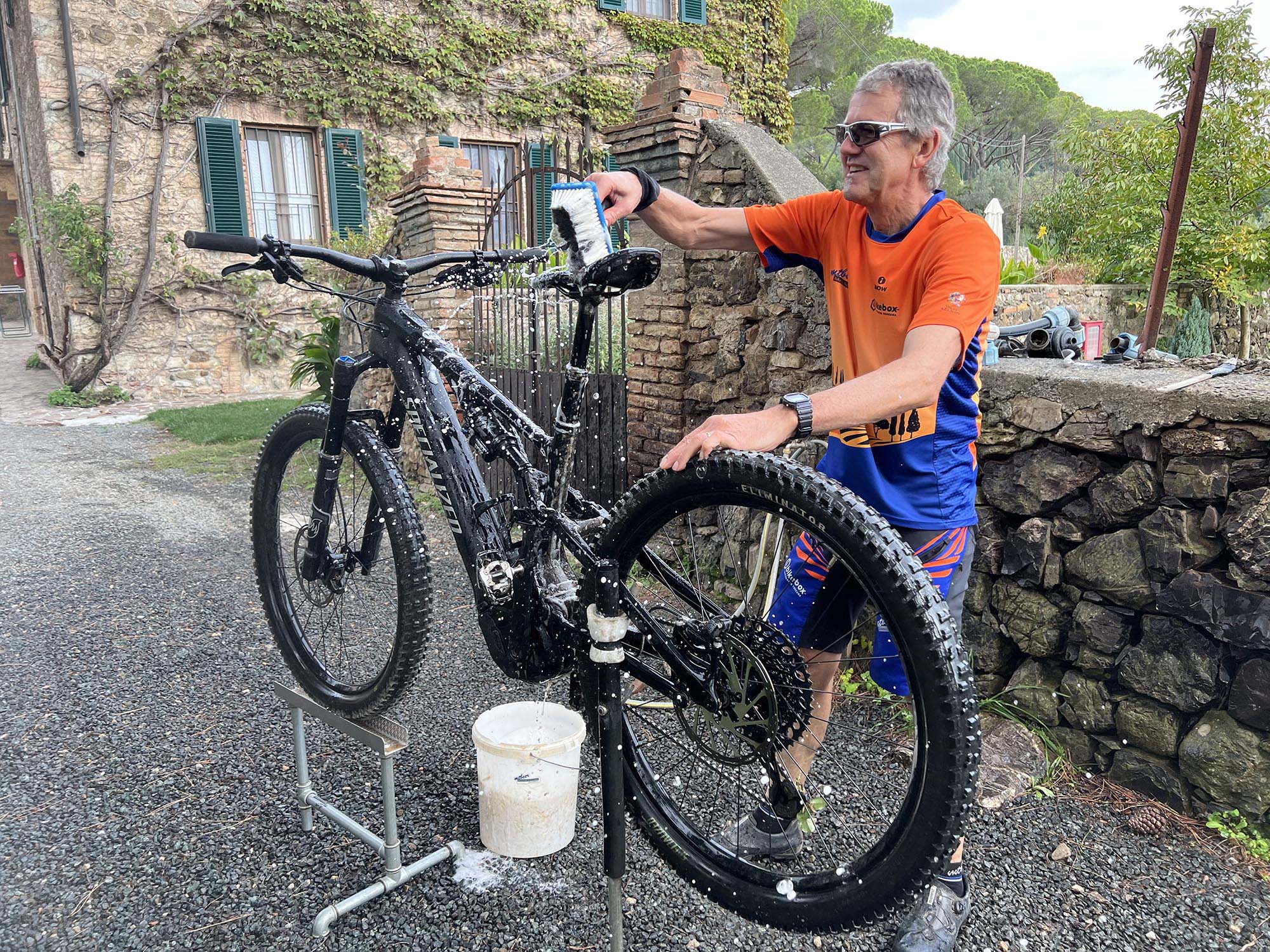Cycling is also fun in winter - provided the material and clothing are right. Here's what you need to know about bikes and e-bikes when you ride them or leave them in the cellar for the winter. Now is the right time for a repair or new purchase - and not in spring, when the rush to the bike shops is at its greatest.
Regular cleaning of the bike is not just for looks. It allows you to visually inspect the frame and all safety-relevant parts such as handlebars, seat post, pedal cranks, pedals, mudguards and pannier rack for cracks and other damage. What else you need to consider when maintaining your bike/e-bike:
- Lights are the life insurance for cyclists in the dark. A white headlight at the front and a red, steady rear light at the back are mandatory. Since April 2012, this also applies to e-bikes during the day. Are the lights working properly? If not -> repair them or have them repaired!
- The drive: Dry and oil the chain. It should be checked for wear from time to time and replaced if necessary.
- Function check of the gearshift. If the gearshift does not work properly: Is the shift cable sheath kinked somewhere or is a cable bend too tight that the cable stretches when turning in? -> rectify or have rectified.
- Visually inspect the tires: Is the tread still visible or is the puncture protection belt (it is usually a different color) or even the carcass visible on the tread? If yes -> change/replace. Also check whether the sidewall is cracked. This usually occurs on the front tire of older bikes, as the front tire wears much less than the rear tire and is therefore replaced less frequently. By the way: There are also winter tires for bicycles.
- If the bike is not ridden in winter: Increase the tire pressure (the pressure range is indicated on the tire sidewall) to prevent flat spots that could damage the tire. Or suspend/jack up the bike so that the wheels do not touch the ground.
- Store the bike/e-bike in a dry place over the winter.
- Visual and functional check of the brakes: If the pads are worn -> replace them or have them replaced by a specialist. With disc brakes, an increase in lever travel until the braking effect kicks in can be a sign that the pads have expired. Also check the thickness of the brake disk or have it checked. This is usually printed or embossed on the disc brake. With market leader Shimano, for example, the disc thickness is at least 1.5 millimeters. This is because the disc also wears down during braking. Discs that are too thin can lead to total brake failure. Ditto for rim brakes. There are indicators on the braking surface of the rim (grooves or dots in the friction surface) that should be visible. Or the manufacturer has defined a minimum rim width. The specialist should be consulted here.
- Check suspension for leaks. If oil is leaking from the fork or rear shock -> contact a specialist. If you have ridden a lot in the rain or off-road: Suspension forks and damper elements are subject to heavy mechanical stress and use a special damper oil inside that becomes dirty over time. For this reason, suspension forks and damper elements should also be cleaned and serviced regularly. Special tools are usually required for maintenance. Therefore: consult a specialist.
- For electronic gears, damper and seat post components: Remove the batteries and store them in a dry place at room temperature between 20 and 80 percent charged.
- This also applies to e-bikes in particular: If the battery can be removed, take it out and store it in a dry place at room temperature (16 - 20 degrees) with a charge of between 20 and 80 percent. If the battery cannot be removed, make sure that the charge capacity is between 20 and 80 percent.
- In the case of e-bikes, it is also important to check that the magnets in the wheel and sensors on the frame are firmly in place and that the electrical cables are in good condition.
If you notice damage that you cannot repair yourself: Bring the bike in for repair in the fall/winter. Then everyone is relaxed and has time. Some repair shops even offer price reductions and a vehicle collection service for the winter service. And don't put your dirty bike in the cellar and wait until spring to have it checked, when the specialist shops are already very busy.
If you ride in salt water in winter: Wash the bike more often, ideally immediately after use with a spray can or garden hose. Avoid high-pressure cleaners! The brakes and chain suffer particularly badly in winter. Check the brakes regularly and oil the chain just as regularly. And not just before you set off, but after cleaning, dry the chain and oil it immediately so that the oil can soak into the chain overnight or until the next use.
November 5, 2023

